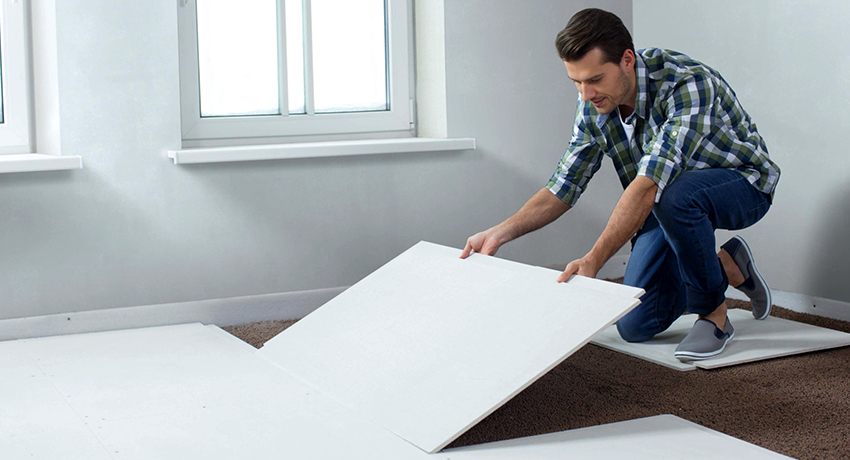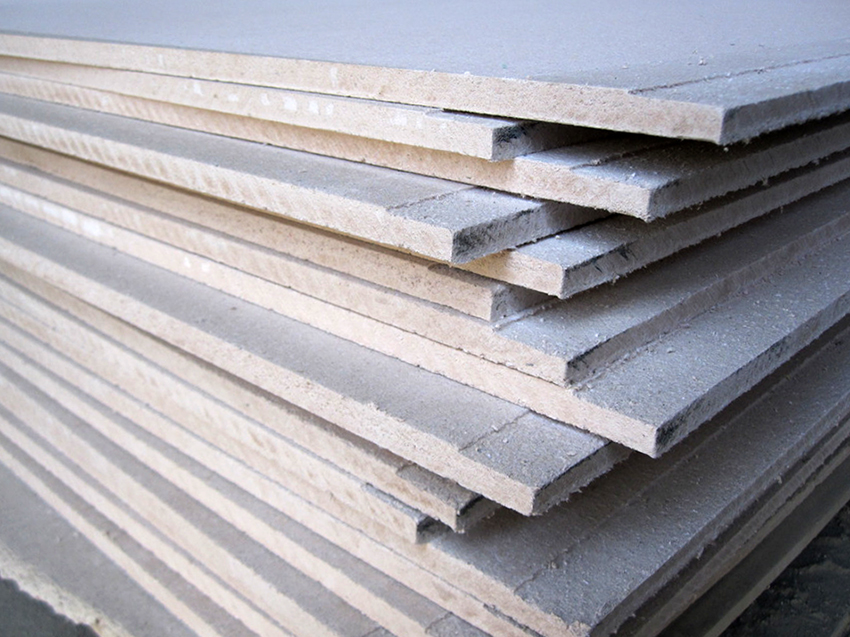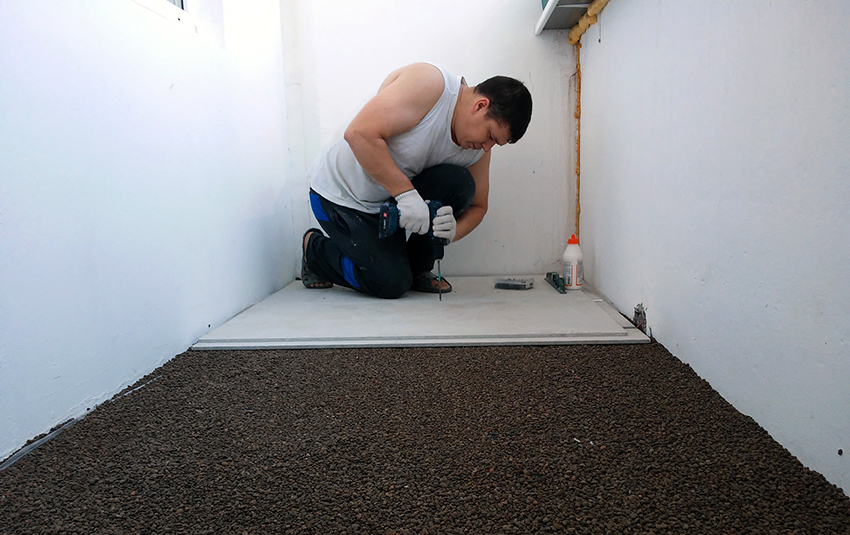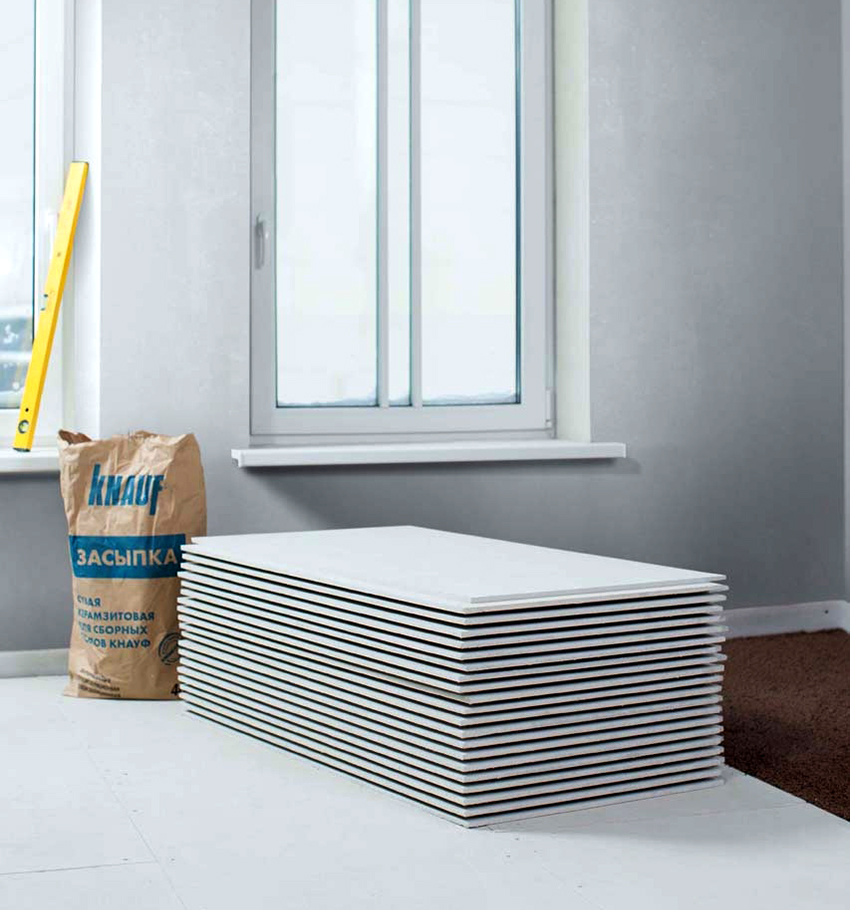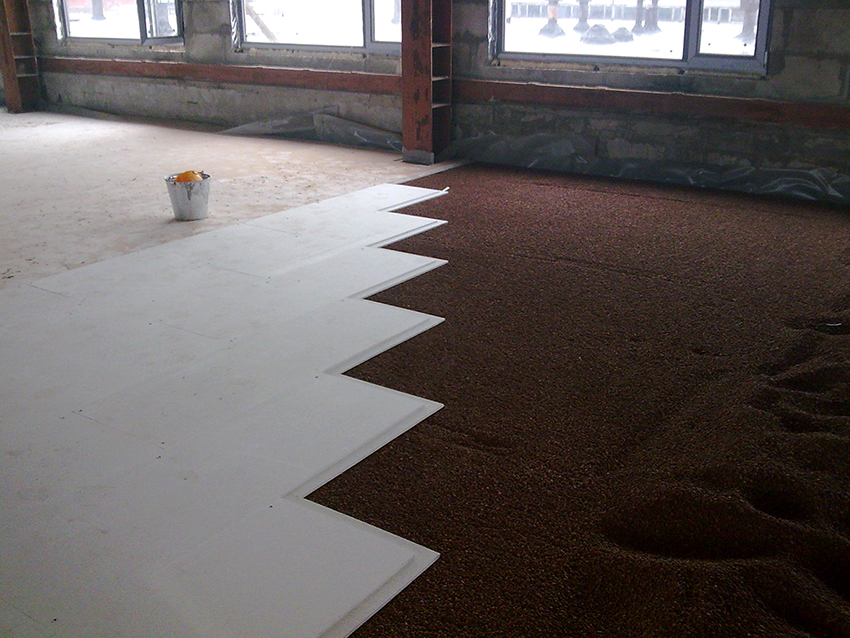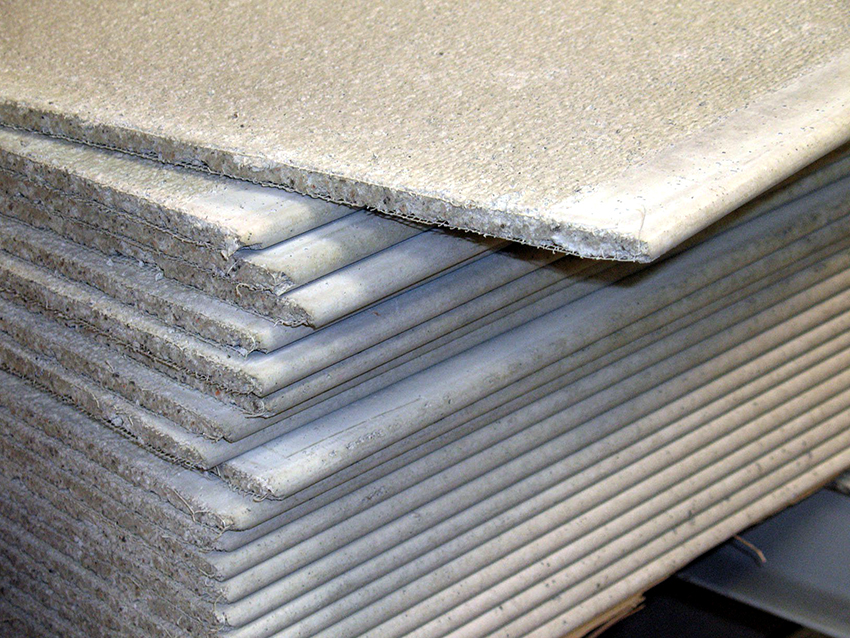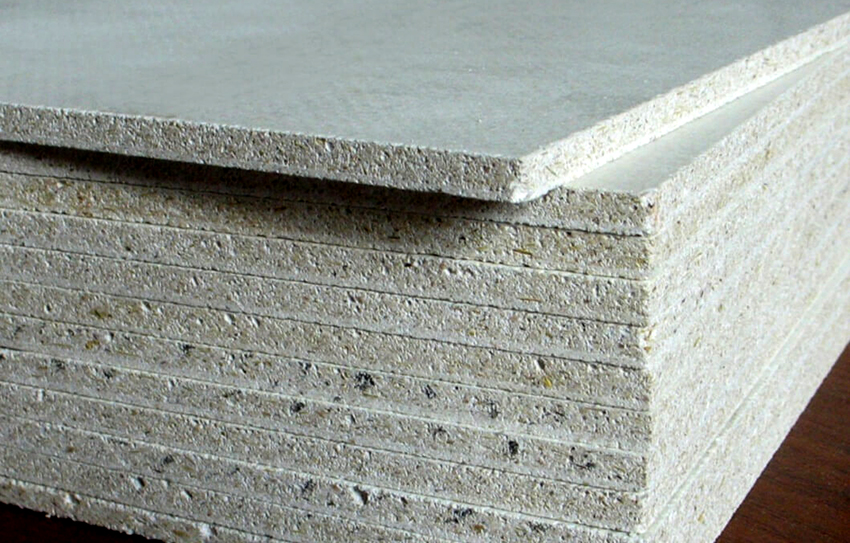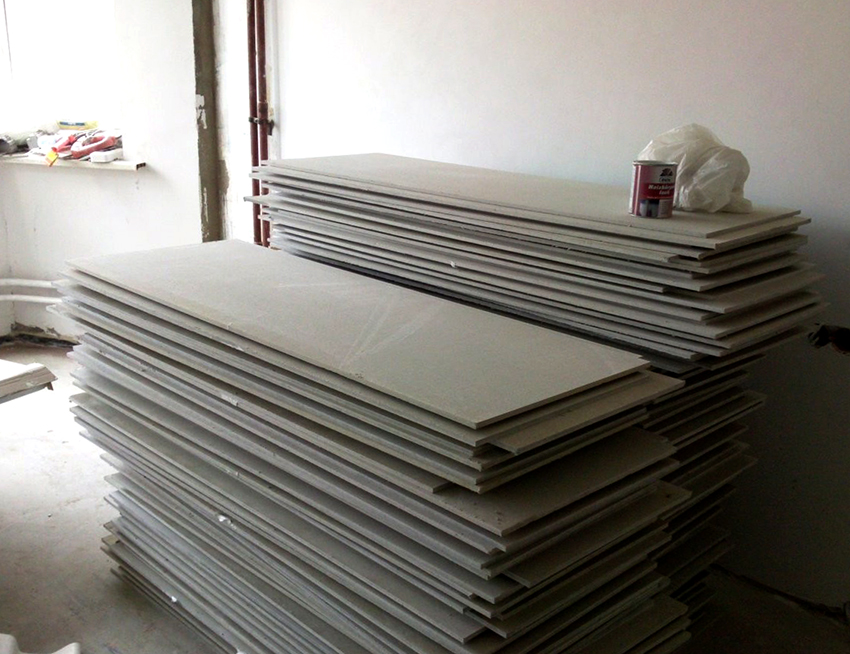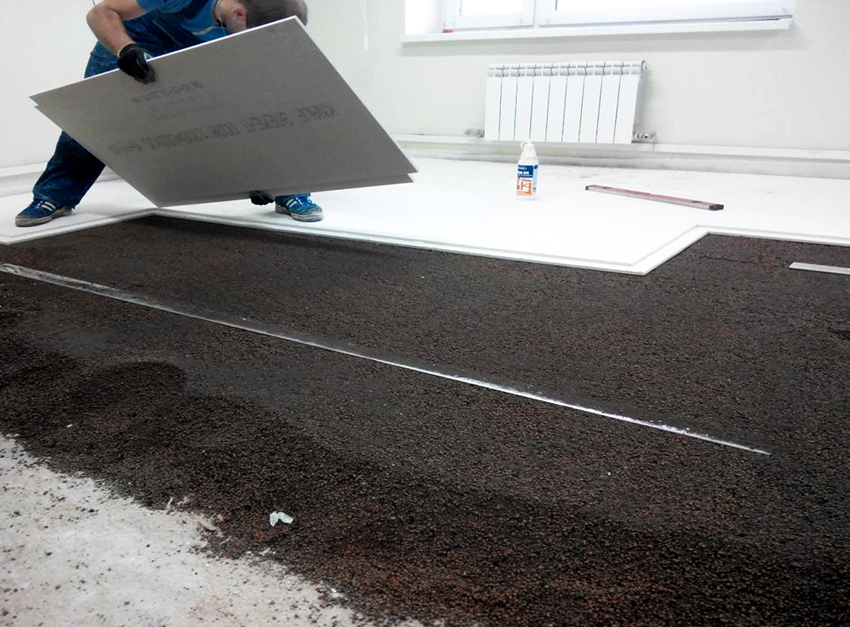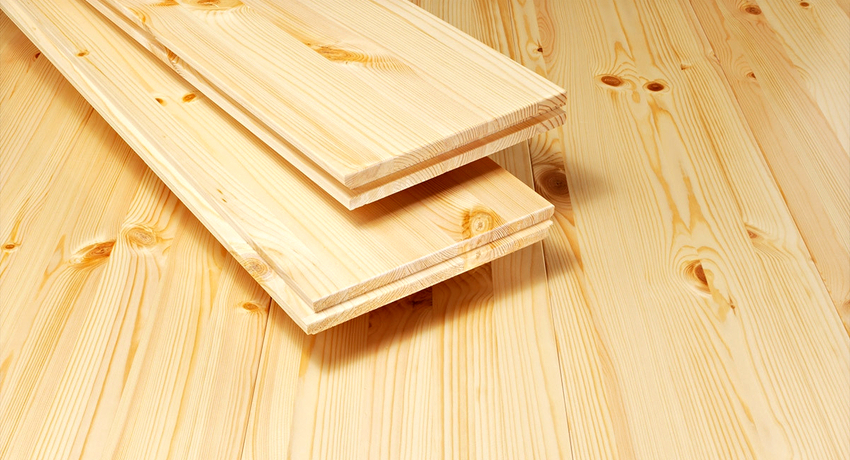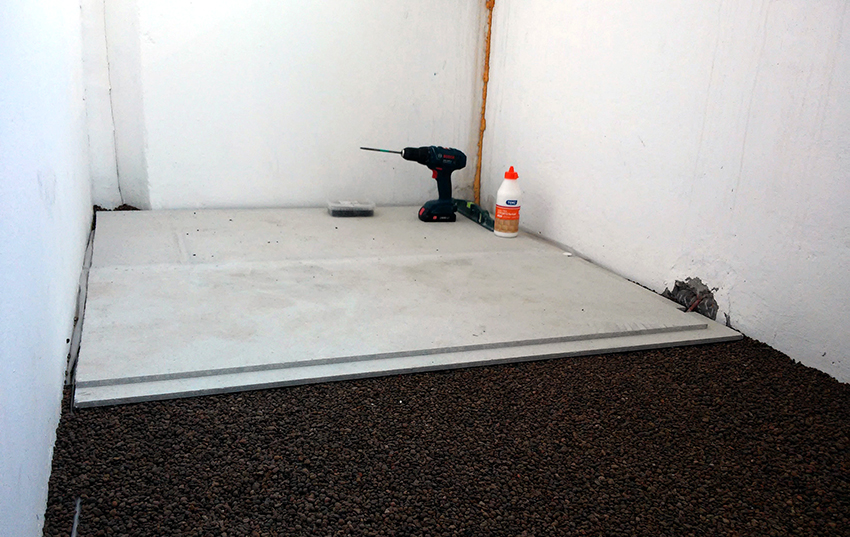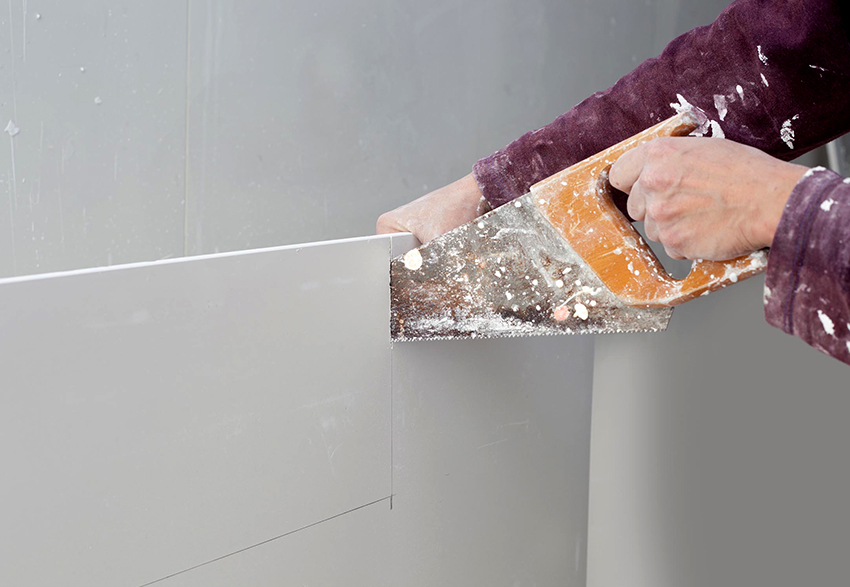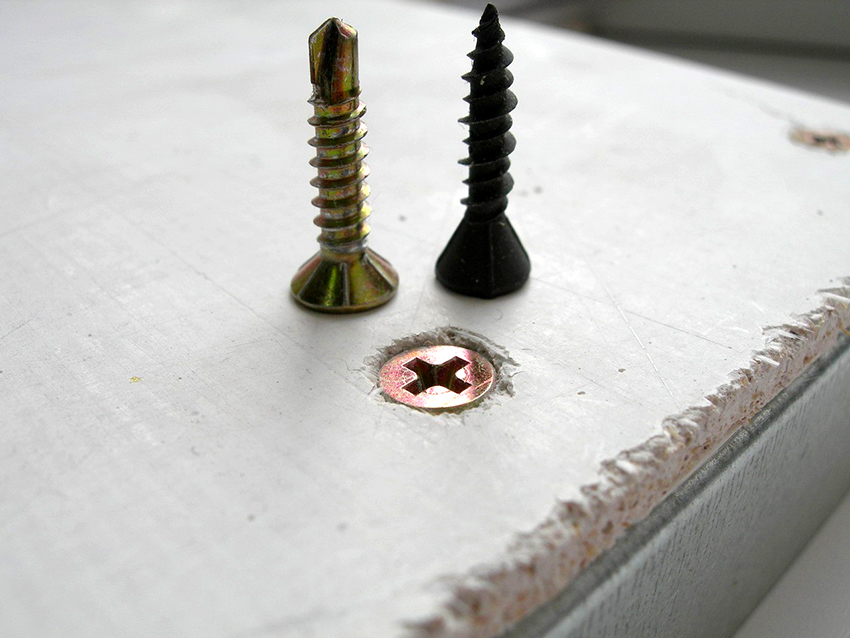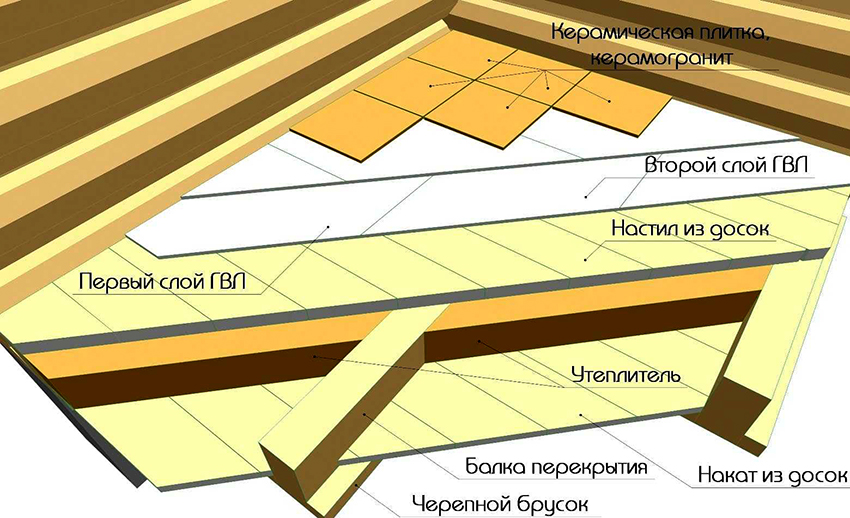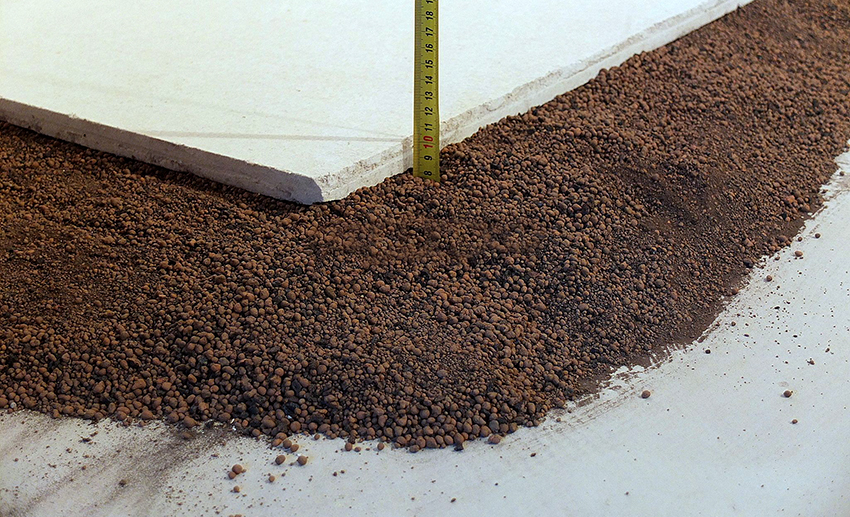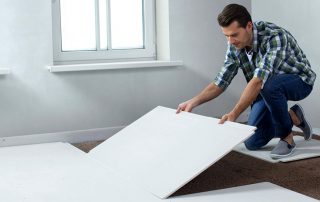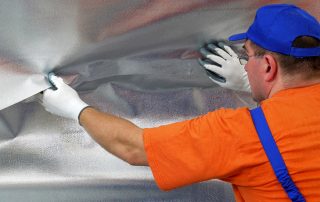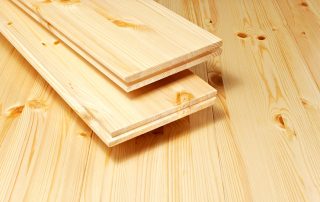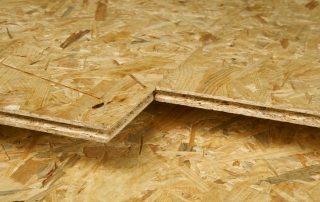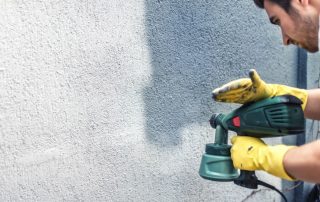When renovating, each owner wants to get a perfectly flat base, because the stability of the furniture and other important nuances will depend on this. At first glance, it may seem that it is very difficult to make even floors, although in reality construction technologies do not stand still and offer the buyer all new materials. GVL for flooring are gypsum fiber sheets that quickly and easily allow you to get a perfect surface.
Content [Hide]
- 1 What are GVL sheets for flooring: key characteristics
- 2 Types of GVL for the floor: the main types of marking, what does it mean
- 3 How much is GVL for the floor: an overview of the main sizes and types
- 4 When is it appropriate to use gypsum fiber boards
- 5 Installation features: how and how to cut GVL at home
What are GVL sheets for flooring: key characteristics
In appearance, gypsum fiber sheets are very similar to drywall, but the technology for their production is completely different. In both cases, gypsum is used for manufacturing, but if cardboard is used for gypsum board, then in GVL the key component is cellulose fiber, which is obtained as a result of processing waste paper. In addition, GVL sheets are homogeneous, while drywall consists of several isolated layers.
Important! When choosing between gypsum plasterboard or drywall, it must be borne in mind that gypsum board is not used to organize flooring due to fragility and insufficient strength.
The production of gypsum fiber (gypsum fiber) boards is regulated by the requirements of GOST R 51829-2001, therefore, the use of the material is clearly regulated. According to the standards, the panels can be used in private, public and industrial premises, including children's institutions. In addition to the floor, the sheets are suitable for wall and ceiling cladding. The material is perfect for pre-finishing, thus canceling the application of plaster, putty and the use of a liquid screed.
The composition of the sheets, in addition to gypsum and loose cellulose fiber, also includes latex, not only giving the material strength, but also giving the panels moisture-resistant qualities. During production, all components are mixed with each other, after which the finished mixture is gradually diluted with water. The resulting doughy mass is then fed to the press, where the finished slabs are formed. After pressing, the panels are dried. Some then go through the grinding process, and some remain the same.
As a rule, processed slabs are more expensive and are mainly used for finishing floors and walls.GVL-panels for the floor are not sanded, because the topcoat is then laid on top of them - it can be tiles, laminate, parquet or even linoleum and carpet. Sheets can be mounted on logs or on a rough floor, on which all cracks and cracks are pre-sealed. It is also allowed to use them in the case of a floating floor, as a material for a dry screed, which does not require a long time to dry. Moreover, the material is considered suitable even for such surfaces, on which it is subsequently planned to exert significant stress.
For the purpose of additional leveling, it is permissible to mount the gypsum fiber board on a wooden floor, concrete or cement base. It is important that the sheets not only level the surfaces, but also allow soundproofing and insulating the floor. At the same time, the material is distinguished by "breathing" properties, which makes it possible for it to pass air. This quality helps to establish a microclimate in the room. A floor made of gypsum fiber board is able to absorb excess moisture that is released from the environment.
The main advantages and disadvantages of GVL-slabs for the floor
Many people prefer to use GVL for a "warm floor", because the material has good thermal conductivity and does not hold back heat. At the same time, the plates are suitable for organizing water, electric and combined floors. In this case, sheets of any thickness are used, but experienced builders recommend taking products with a size of 10-12 mm.
Important information! In addition to the fact that the material is suitable for the design of horizontal and vertical surfaces, it is also successfully used in the arrangement of window and door openings, to create decorative boxes that help to hide engineering communications, as well as for the design of partitions and false walls in technical and residential premises ...
The main advantages of GVL-boards:
- Fast installation. The floor, leveled with sheets, can be immediately covered with finishing materials, and it is also permissible to install any heating system.
- Easy transportation. Due to the fact that mainly the floor sheets are characterized by small dimensions, there will be no difficulties with transportation and lifting of the slabs.
- Low weight. This allows sheets to be laid on substrates that are not particularly durable. For example, you can lay GVL-sheets for the floor on wooden beams.
- Possibility of using in unheated rooms. Due to the fact that materials with a high moisture content are not used during installation, it is permissible to install panels even in rooms with temperatures below zero.
- No debris when stacking. When cutting, the sheets do not crumble or crack, as happens with drywall, as a result, there will be a minimum amount of waste during work.
- Good performance characteristics. Unlike traditional flooring materials such as particle board or particle board, after installation there is no chance of squeaks due to displacement and friction of the boards. With constant jumps in temperature, the sheets do not change shape.
- Ability to withstand mechanical shock. Even with a pinpoint impact, most likely, dents will appear, but not cracks.
- High fire resistance. GVL belongs to the group of materials G-1, which according to the classification means hardly combustible. In case of fire, the sheets retain their former shape for a long time, and when heated, they do not emit harmful substances.
- Safety for others. The composition contains components of natural origin, therefore, it is allowed to lay the plates in rooms for any purpose.
The disadvantages of using gypsum fiber sheets for floors include the following:
- careless handling or improper cutting can break or damage the plate;
- the price of GVL sheets for the floor is higher than the cost of other rough coatings;
- many people note that even moisture-resistant material is exposed to fungus and rot.
Technical characteristics of conventional and moisture resistant gypsum fiber board for floor
Different technical characteristics of the material are associated with the fact that different types of cellulose are used in production. In addition, the content of the substance in the sheets may differ. For repairs, it is better to immediately buy the required number of plates from one batch. It is important to pay attention to the fact that all goods must be tested, which will be indicated in the certificates. If the outlet is unable to show the required documents on demand, it is better to contact a trusted supplier.
In general, the high quality of the slabs, the price per sheet of gypsum fiber board for the floor, which is acceptable for most buyers, made the material in demand when carrying out internal repair work. Main technical characteristics of GVL and GVLV for the floor:
- Viscosity. Another name for the indicator is strength, which is 1000-1250 kg / m³. This suggests that you can screw various fasteners into the sheets.
- The specific resistance to pulling out self-tapping screws is 40-50 N / m, which is 2 times more than that of drywall. It is very important to use special self-tapping screws for gypsum fiber during installation.
- Soundproofing. The indicator is at the level of 30-40 dB, but the value increases with increasing thickness. There are special three-layer soundproofing boards to achieve maximum insulation.
- Low thermal conductivity. The coefficient is in the range of 0.22-0.35 W / m * C. For comparison, you can consider a similar indicator of concrete equal to 1.75. Consequently, the material is considered warm and helps to save on heating costs.
- Flexural strength. The indicator is almost identical to drywall and is 5.5 MPa. But in this case, it must be borne in mind that the sheets of gypsum fiber board do not bend as well as the gypsum board, although it does not matter when organizing the floor covering, because the sheets are laid on a flat surface.
- Internal tensile strength index. These values are considered average for building materials and, depending on the type of board, vary from 0.29 to 0.3 MPa. You need to be especially careful when cutting the sheet; it must not be allowed to sag strongly.
- Elastic modulus. It characterizes the ability of the material to take its original shape after loading. For GVL, this indicator is 2000-3000 MPa.
A proven fact! A gypsum fiber sheet is considered in demand, because it is permissible to use it in any premises. For example, if you lay moisture-resistant gypsum fiber board on the bathroom floor, the material will absorb excess moisture from the environment, and then evaporate it when conditions change. The sheets will also protect the neighbors below in case of unintentional flooding.
Types of GVL for the floor: the main types of marking, what does it mean
Gypsum is itself a hygroscopic material, therefore, it is not recommended to lay gypsum boards on the floor if the room is exposed to moisture. For rooms with constant high humidity levels, for example, for kitchens, bathrooms, toilets, swimming pools and saunas, it is better to purchase GVLV, that is, moisture-resistant plates. Externally, the sheets do not differ from each other, so it is important to pay attention to the marking.
For the design of the floor covering, special elements of the GVL floor are produced, marked with "EP". Most often, the material is produced by Knauf, which is the main supplier of sheet products in the domestic market. All products are distinguished not only by their high quality, but also by their increased strength characteristics.
Some people prefer to lay ordinary GVL-plates on the floor, but for this, not one, but two elements are taken, which are located with an offset relative to each other.This distance usually does not exceed 3-5 mm. If special sheets of gypsum fiber board are used for the Knauf floor, they are stacked in one layer, because they have sufficient strength.
In addition, products are classified according to the type of edge. If the sheets differ in a straight edge, they are marked with "PC". Slabs with a seam edge are also available to minimize the visual perception of joints. The fold size usually varies in width from 2.8 to 3.2 mm, depth - 1.7-2.3 mm. It is appropriate to decorate the floor with both one and the other type of material, but in view of the fact that the price of gypsum fiber board for a floor with folded edges is higher, many people prefer to purchase sheets with a straight edge.
As already mentioned, the production process of plates is regulated by GOST standards. Based on this, the following options for standard sizes stand out:
- width, cm - 50, 100, 120;
- length, cm - 150, 200, 250, 270, 300;
- thickness, mm - 12.5, 15, 18, 19, 20.
It is not always possible to adhere to these indicators, therefore, a deviation in width is possible, but no more than 3-4 mm. In terms of length, the deviations here should not exceed 2-3 mm. In rare cases, if the plates are long, this figure reaches 4 mm.
In order not to be mistaken when buying material, you should know what this or that marking means, for example, GVL-PK 2000x1000x12.5. Here you can see that an ordinary board is presented, which does not have moisture-resistant qualities, and is distinguished by a straight edge. If the abbreviation "VGLV-FK" is indicated on the marking, it means that the plate is moisture resistant with a folded edge.
One of the key advantages of gypsum fiber sheets is their flame retardancy. Even cellulose, which is mixed into the gypsum mixture, does not burn or ignite; in case of fire, the material does not contribute to the spread of fire, which is especially important, for example, in wooden houses. In addition, the stoves will not emit toxic substances during combustion.
How much is GVL for the floor: an overview of the main sizes and types
The price of gypsum board for flooring primarily depends on the type and size of products, which may be different. The German company Knauf, founded in the middle of the last century, has been considered the market leader for many years. It was she who first began to produce gypsum-based building materials.
The most popular in the design of flooring are moisture-resistant gypsum fiber board for Knauf-superpol floor, characterized by increased thickness and improved strength characteristics. The average cost of GVL for the floor is 250-350 rubles. Slabs of the following dimensions are considered the most popular and most purchased:
- GVL for floor moisture resistant 1200x600x10mm - price 180 rubles;
- GVLV PK 2500x1200x12.5 mm - 590 rubles;
- GVLV FC 2500x1200x12.5 mm - 610 rubles;
- GVLV FC 2500х1200х10 mm - 520 rubles;
- GVL for floors moisture resistant 1200x600x20mm Knauf-superpol - 275-325 rubles;
- fireproof gypsum board Fireboard Knauf 2500х1200х12.5 mm - 2290 rubles.
Of course, besides the Knauf company, there are other manufacturers. For example, the company "Giprok" is considered one of the most popular in the world and is also engaged in the production of products based on gypsum, but in its assortment you can only find drywall. So, a plate of this manufacturer with a size of 2500x1200x12.5 costs exactly 2 times cheaper than moisture-resistant gypsum fiber board for a floor of 1200x600x20mm from Knauf, because the price, depending on the type of material, is 210-310 rubles. It should be remembered that the use of gypsum plasterboards for the base is strongly discouraged.
Related article:
Floorboard: sizes, types, installation features
Technologies for installing flooring from boards. Rules for preliminary calculations of the required amount of material for work.
When is it appropriate to use gypsum fiber boards
Decorating the floor with GVL-plates is appropriate for creating a screed in any room.This will primarily help to reduce the pressure on the floors. For comparison, you can take a self-leveling floor. First, you will have to purchase a large amount of materials such as cement, gravel and sand. Secondly, you need to wait several days before starting the installation of the finishing coating. Thirdly, the weight of the screed will be at least 100-150 kg per m², which is especially important if we are not talking about the first floor. It should not be forgotten that a concrete mixer will probably be needed to complete all the actions, which is not so easy to bring to the upper floors.
Based on the listed facts, it becomes clear that gypsum fiber is an excellent alternative to the self-leveling floor, which allows you to avoid such difficulties and speed up construction and repair work. In addition, it is appropriate to use GVL for the floor under the tiles and other flooring options.
Useful advice! For a warm water floor, GVL is not an obstacle. The sheets fit well over the system, you just need to be careful not to damage the communications during installation.
If it is required to additionally insulate the surface, fibrous polystyrene foam or backfill insulators are used. Most often, expanded clay is used for this, which has good characteristics and low cost.
Installation features: how and how to cut GVL at home
Laying gypsum fiber boards is permissible both on a solid and discontinuous basis. It is necessary that it be perfectly flat and not have differences of more than 2 mm for every 2 m of length. This is due to the fact that the sheet can bend and repeat the shape of the notch, which will affect the evenness of the surface.
The base should be laid especially carefully if you plan to put parquet, parquet board or other wooden covering on top, which may slightly diverge and creak. If the irregularities remain under the linoleum, a violation of integrity is quite possible in this place, especially when furniture is installed on top.
Another point concerns the laying of gypsum fiber board on a loose base or wooden logs. In this case, it is better to use moisture-resistant gypsum fiber board for the floor - moisture-resistant Knauf marked "EP" is considered the best option. It is better to lay 2 layers at once and at the same time make sure that the sheets are shifted relative to each other, and the seams do not coincide.
When laying on a movable base, including logs, it is better to use an elastic filler for the joints, for example, a silicone sealant, which retains its elasticity even after drying.
How to cut floor elements GVL Knauf or other types of material? The fastest result can be achieved when using a grinder, but it must be borne in mind that the process will be accompanied by the formation of dust.
You can also use a regular metal knife for cutting. Of course, the process will take a little longer, because at least 6-8 times will have to be carried out along the base to leave a deep furrow, and then try to break the sheet. At the same time, many focus on the fact that it is necessary to break the slab with an upward and not downward movement.
Manufacturers recommend mounting the sheets using special self-tapping screws marked "by gypsum fiber". The main difference from conventional fasteners is the presence of a head with a sharper cone, which allows the fastener to penetrate deep into the sheet without preliminary drilling. The length of the screw must be 3 times the thickness of the board used.
Basic installation options: on logs, concrete, dry screed
The best material for organizing such a floor is considered to be moisture-resistant GVL Knauf, although sometimes you can find a method of laying ordinary elements in 2 layers, but the second method will cost more.There are 2 main options for floor design:
- The sheets are laid directly on the joists, in this case the installation step will depend on the thickness of the slabs. It is important to take into account that the thicker the GVL, the larger the step at the lag. The minimum distance is 30 cm, the maximum is 50-60.
- The second method involves the implementation of a subfloor, on which gypsum fiber is then laid. The main advantage is the increased step, which significantly reduces the cost of purchasing a bar, in this case the distance varies from 60 to 80 cm. The disadvantage is that you will have to purchase an additional floorboard.
With the direct installation of GVL-plates on logs, the size of the material is selected in such a way that the edges of the plates fit onto the bars. Self-tapping screws are screwed in with an indent from the edge by 1.5 cm.
Useful advice! If additional insulation is required, the space between the joists is filled with sound or heat insulating materials.
The dry screed technique was developed by Knauf. It is for this technology that GVL-plates of increased density - "Superpol" were specially produced. The essence of the method is as follows:
- small expanded clay is poured onto the base and carefully leveled;
- after that, the elements of the GVL floor are laid;
- the selected topcoat is mounted on top.
The main advantages of the technique are the minimum load on the floor and the insulated floor. Instead of expanded clay, dry sand can also be used, but mixing different materials is strictly forbidden, because the floors can shrink.
The concrete base is considered reliable, but very cold, so insulation is indispensable. In this case, the organization of the so-called floating floor is suitable. To begin with, a heater is placed - expanded polystyrene, on which sheet material is attached. If the base is flat and the slabs are installed on a polystyrene foam surface, you can choose thin and, accordingly, moisture-resistant gypsum fiber boards for the floor, for example, small-format centimeter sheets, with a lower price.
Gypsum fiber has many advantages, among which it is worth highlighting the strength of the material and ease of installation. The floor made of GVL sheets will not only be flat, but also warm. Moreover, nothing prevents, if necessary, to organize additional insulation under the surface in the form of a "warm floor" of any type.
